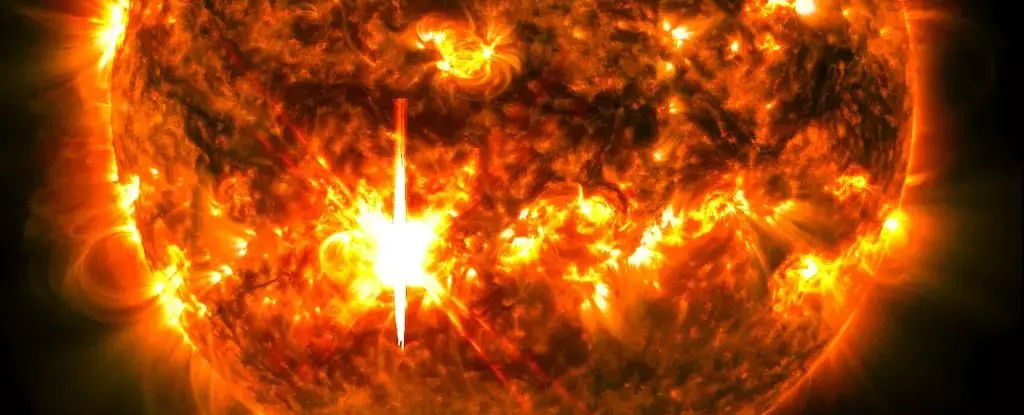As October unfolds, the Sun has kicked off the month with a powerful exhibition of solar activity, initiating a series of breathtaking events that have captivated scientists and skywatchers alike. On October 1, the Sun unleashed a massive solar flare measuring X7.1, marking it as the second most intense flare recorded during the current solar cycle and placing it firmly among the top 30 solar flares of the past three decades. This extraordinary event has spurred discussions regarding its impact on Earth and what it indicates about our star’s behavior.
Despite the intensity of the flare, experts assert that there is no immediate cause for alarm. The NOAA’s Space Weather Prediction Center has advised that from October 3 to 5, Earth may experience mild to severe geomagnetic storms as the coronal mass ejection (CME) associated with the flare hurtles through the Solar System. This type of activity is characteristic of the Sun during its peak cycles, suggesting that we are presently observing heightened levels of solar activity.
To comprehend the significance of these solar phenomena, it is crucial to distinguish between solar flares and coronal mass ejections. Solar flares are sudden bursts of light and radiation that travel to Earth at the speed of light, sometimes resulting in short-term disruptions like radio blackouts. In contrast, CMEs involve the expulsion of enormous quantities of solar particles entwined with magnetic fields, which can trigger geomagnetic storms upon interacting with Earth’s magnetosphere.
These storms primarily influence the upper atmosphere and can generate stunning natural displays known as auroras, or the Northern and Southern Lights. When high-energy solar particles interact with atmospheric gases, they produce the spectacular light shows synonymous with auroras, captivating observers at higher latitudes. The interplay between solar activity and Earth’s atmospheric responses reveals vital insights into the Sun’s lifecycle and its effects on terrestrial systems.
The recent solar flare and CME were spawned from a notably intricate region of sunspots designated as AR 3842. This Beta-Gamma-Delta sunspot group is characterized by its convoluted magnetic field lines that result in heightened flare activity when oppositely polarized magnetic fields become tangled and experience a release of energy. Positioned at the center of the solar disk, AR 3842 is uniquely poised to direct eruptions toward Earth.
In the hours following the X7.1 flare, AR 3842 produced another significant flare measured at M3.3, underscoring the likelihood of continued solar activity emanating from this sunspot region. While the sunspot group remains potent, the potential consequences for Earth remain contingent on the intensity and direction of subsequent CMEs.
Historically, solar flares and their associated CMEs have led to both breathtaking atmospheric displays and disruptions to technology and communication systems on Earth. The most powerful flare recorded during the current cycle, an X8.7 flare that occurred in May, triggered exceptionally vibrant auroras that dazzled audiences around the globe. As we anticipate the outcomes of the recent flares, meteorological organizations such as the British Met Office’s Space Weather service and Australia’s Bureau of Meteorology are forecasting G3-level geomagnetic storms, raising expectations for upcoming auroral displays.
Taking into account the predictive upgrades from various space weather centers, the chances of witnessing a dynamic light show on the nights of October 4 and 5 are high. With forecasts suggesting geomagnetic activity that could surpass levels 6 and 7 on the Kp Index—a scale used to gauge auroral opportunities—skywatchers should prepare for potential visual marvels.
This year’s celestial events serve as a reminder of the Sun’s immense power and its ability to create awe-inspiring phenomena. As the world engages with these remarkable solar events, it reflects not only on the intricate workings of our Sun but also on the broader implications surrounding space weather and its effects on life on Earth. While scientists continue to monitor solar activity, the excitement surrounding these dramatic spectacles reinforces our connection to the cosmos and our ongoing quest to understand the universe’s dynamics. As the autumn progresses, let us remain vigilant—our skies may soon be graced with the enchanting luminescence of the auroras.


Leave a Reply